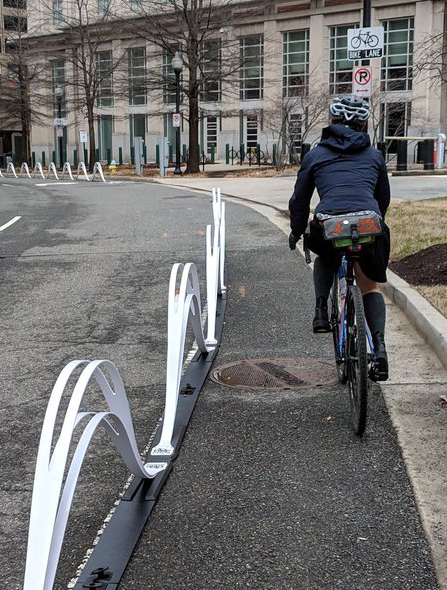The COVID-19 pandemic has cast a harsh light on New York’s over-reliance on cars and the inequitable distribution of street space. But it’s also highlighted the city’s collective creativity in re-imagining how streets are used.
Consider where the past seven months have taken us. In the early phases of the pandemic, New York cyclists took to emptier streets in record numbers, shattering Citi Bike ridership records. In response, the city fast-tracked protected cycling projects and created more than 100 miles of open streets to help people safely get outside.
In June, restaurants expanded to outdoor dining, offering a lifeline to businesses and helping people safely enjoy long-awaited meals out. In July, the city enhanced outdoor dining with entire outdoor dining streets, and by the end of September, the program was made permanent and year-round. And as kids head back to school, being "in class" may now extend to nearby streets and parks as part of the city’s outdoor learning program.
These transformations have been extremely popular and were made possible through the use of tactical, quick-build infrastructure. In the case of street cafes, instead of prolonged processes and procurements, the DOT laid out clear rules about how to build a structure to protect the pedestrian right of way, and local businesses quickly repurposed existing street space, creating new spaces for dining out and beautifying our neighborhoods. Where there were once parked cars, plants and parklets now grow.
With city budgets tight and the need for safe physical distancing still tantamount, we can’t stop with the cafes, as City Rise and other new civics agree. New York needs to reduce red-tape and open the streets for more adaptations that invite people to move, learn, eat, and gather all throughout the year.
This is particularly urgent for personal transportation. The city has seen massive uptake in micromobility use, but our streets are still built to accommodate cars — at the expense of all other road users.
Luckily, there’s a new class of companies offering quick-deploy infrastructure that can help the city continue to reclaim space and put it to the highest social use. This infrastructure is available at low or no-cost for cities, and can repurpose street space in a single day. Most importantly, it supports zero-emissions transport that is safe, affordable, and convenient. Here’re just some examples.

Protected cycling infrastructure: At this point, it’s a demonstrated fact that if you build a network of connected and protected bikelanes, people will ride. Protected infrastructure is crucial to achieving the city’s OneNYC 80 percent sustainable modeshare goal by 2050 and closing the cycling gender gap. While poured curbs are ideal, quick deploy delineators are a big step up from painted lanes and can work as an interim step. Options like Saris Infrastructure’s Wave Delineator (right) — which can be glued or bolted to the asphalt — can go a long way toward keeping cars and delivery vehicles out of bike lanes, and they’re much more attractive than traditional bollards.
Secure bike parking: As micromobility ridership has increased, so has bike theft in New York — which is up more than 50 percent over last year. Secure bike parking is vital for making cycling a convenient daily option and protecting riders’ substantial investments in new bikes, e-bikes, and e-scooters. Quick-deploy solutions like Oonee’s tactical parking pods give working cyclists and everyday riders 24/7 access to protected bike parking and convenient servicing. With expenses paid via advertising, they’re offered at no cost to the city or the rider, and can include additive features, like living roofs, which capture storm-water and help fight the heat-island effect.

Charging and parking docks for electric micromobility vehicles: Cities are investing a whole lot of money to build EV charging hubs, which benefit the rare people who can afford their own electric car. As the popularity of e-bikes and e-scooters continue to grow, the city should make space for shared charging infrastructure that can be used by individuals and shared operators who don’t have garages or large apartments to charge the growing number of personally-owned e-scooters and e-bikes. New companies like Swiftmile offer quick-deploy Mobility Hubs, which will be particularly important to help manage sidewalk clutter as part of the city’s upcoming e-scooter program, as well as mitigate the double-parking and added carbon emissions associated with the nightly collection of e-scooters for charging.
If New York wants to avoid carmageddon, we need to build off of the massive success of our quick build programs to date and move quickly to add infrastructure that supports affordable and sustainable transport modes. Even in a constrained budget environment, the city can make meaningful changes to the streetscape with methods and materials we have today -- making our city more sustainable, liveable, and joyful in the process.
Colin Roche is the CEO and Co-Founder of Swiftmile. Louis Pappas is a Co-Founder at Electric Avenue.






